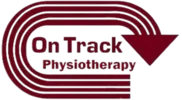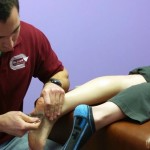So what should Physical Therapy look and feel like? There are many things to consider when choosing which physical therapy clinic is right for you. Over the next few weeks I’m going to offer a few suggestions for things to think about, or even ask other therapists about, prior to beginning a course of physical therapy.
Some things should be fairly obvious such as will you see the same therapist each visit? How much time each visit will I spend DIRECTLY with my therapist (not supportive personal)? How many visits per week? and so forth.
What I want to discuss are the things most people would not normally consider (in fact, most therapists and physicians aren’t thinking this way either!)
1) Movement Based Approach: my previous blog entries Don’t Put Fitness on Dysfunction and Movement Proficiency and the Ankle describe how looking at patterns of movement are critical to narrowing down where the cause of the pain is coming from. Just because your back hurts doesn’t mean it’s the back’s fault. Your back may just be the victim of poor hip mobility below and poor Thoracic and ribcage mobility above just to name a couple.
A simple model I discuss in those previous posts is the Joint-by-Joint model of alternating mobility and stability requirements.
Following the traditional physical therapy model, you’re probably not going to find the connection (Instead the pain in the low back is generally the only focus). Don’t get the wrong impression. It’s not that the low back does not deserve to be treated to reduce pain and inflammation. That absolutely must be done! But if that is all that is addressed, then chances are your low back symptoms will be back sooner than later.
The Selective Functional Movement Assessment is a quick and effective way to determine the person’s most dysfunctional movement pattern.
The object is to determine which pattern is the most dysfunction, and then break that pattern down into it’s component parts to find the impairment. So for example, if someone cannot touch their toes, it could be a lack of mobility in the spine, hips, hamstring, or even a lack of core stability and poor breathing mechanics. Your therapist must have a way to find that answer!
If you’ve ever been to physical therapy for your back, I can almost guarantee you were told you must stretch your hamstrings. Am I right?
Well if you can’t touch your toes, of course your hamstrings will feel tight. Lacking mobility in your spine or hips will limit your toe touch and make it seem like your hamstrings are tight. It’s probably only the hamstrings 25% of the time at the most.
Unfortunately many people are spinning their wheels in physical therapy because they are not working in the right place at the right time. I can’t tell you how many people have told me that they have failed a trial or two of traditional PT, injections, massage, etc.
2) A Soft Tissue System: at On Track Physical Therapy I use the IASTM because of the great results I’ve had treating all types of soft tissue injuries from tendinopathies. From plantarfasciitis, to contusions, scar management, and more. I also utilize Dry Needling to address soft tissue dysfunctions. Granted this treatment is not for everyone, but it defiantly could be a viable option.
Some sort of soft tissue release may be needed to allow for a window of opportunity to access greater movement. It is the exercises job to then lock the new movement into place. Very often even above and below the site of pain there will be significant soft tissue restrictions that should be addressed. As I mentioned earlier, using a movement based approach will allow a physical therapist to pin point restrictions. This way time is not wasted treating irrelevant areas.
For example, we know from the literature that very often trigger points in the gastroc/soleus complex (calf) will contribute to plantarfasciitis and even radiate pain to the bottom of the foot. Limitations in hip extension and glute strength will also contribute to the condition. Is your therapist looking that far up the body?
So what difference does all this make? Ultimately it can be the difference between actually ‘fixing’ the problem or just addressing symptoms. When we can ‘fix’ the problem (the ultimate cause of your pain), we may never see you again and that’s a good thing. When only the site of pain is addressed, very often you will find yourself back in the Dr. office and back for another bout of physical therapy a few months down the road.
At On Track Physical Therapy, our goal is to ‘fix’ the problem, and to give the patient the tools necessary to prevent a recurrence. Contact us anytime with questions about our methods, and how we can help you if you’ve been unsuccessful with other methods of treatment in the past. This is why we offer a Free 15 minute consultation to address any of your concerns!

About the Author: Dr. Greg Schaible is a physical therapist and strength coach specializing in athletic performance. He attended The University of Findlay as a student athlete. As an athlete he competed in both Indoor and Outdoor Track & Field where he earned honors as a 5x Division II All-American and 6x Division II Academic All-American. In 2013 he completed Graduate School earning his Doctorate of Physical Therapy (DPT). Greg is the owner of On Track Physical Therapy in Ann Arbor, Mi. Follow On Track PT and Performance on Facebook.



